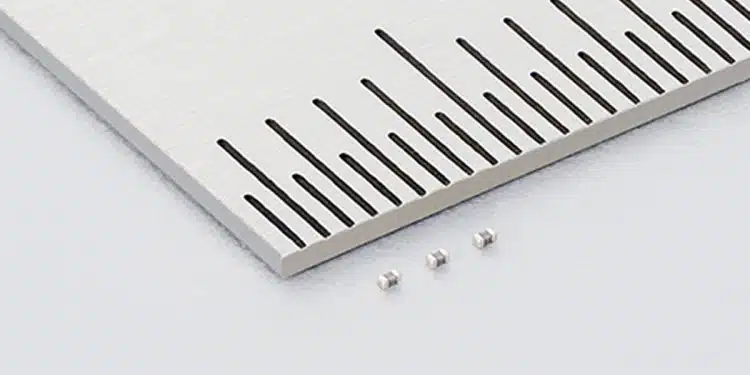Murata, a leading manufacturer of passive components, has expanded its line-up of high-Q rated monolithic ceramic chip capacitors (MLCC).
Designed for high frequency module applications such as those used in cellular communication infrastructure, the GJM022 series expand the world’s smallest high-Q capacitor with a voltage rating of 100 V.
In order to facilitate high-speed 5G communication, designers must incorporate numerous high frequency outputs along with the necessary power amplifiers. This increased component count has emphasized the need for the modularization of wireless communication circuits.
Murata has developed the GJM022 series in response to the increasing requirement for compact but high performing capacitors. Murata has utilized state-of-the-art thin-layer forming and high-precision laminating technologies to create an advanced and miniaturized capacitor that does not compromise on performance – exhibiting the exceptional high-Q and low-loss performance needed by the latest applications.
With a size of 0402 metric 0.4 mm × 0.2 mm LW (01005 inch), the new GJM022 enables electronic engineers to overcome packaging limitations while maintaining optimal performance. The high temperature guarantee further helps with this initiative, by providing designs with greater freedom over positioning. This allows for reliable long-term operation, even in close vicinity to hot components that radiate heat, such as power semiconductors.
The GJM022 is an ideal choice for a wide variety of applications, such as impedance matching and DC cutting applications within RF modules for base stations. In such implementations, the high-Q value and low equivalent series resistance (ESR) contribute to improving power amplifier efficiency and lowering power consumption.
“5G represents a significant performance improvement over previous generations of cellular communications, but for engineers to take advantage of this exciting technology in their designs, they require the support of high-quality passive components,” said Nakagawa Hidetoshi, General Manager at Murata. “With the GJM022/100V series we have listened to the market’s technical demands and met them head on.”
Engineer samples are available with the GJM022/100V currently in limited production. The product will move to full stocked production in February 2024.































